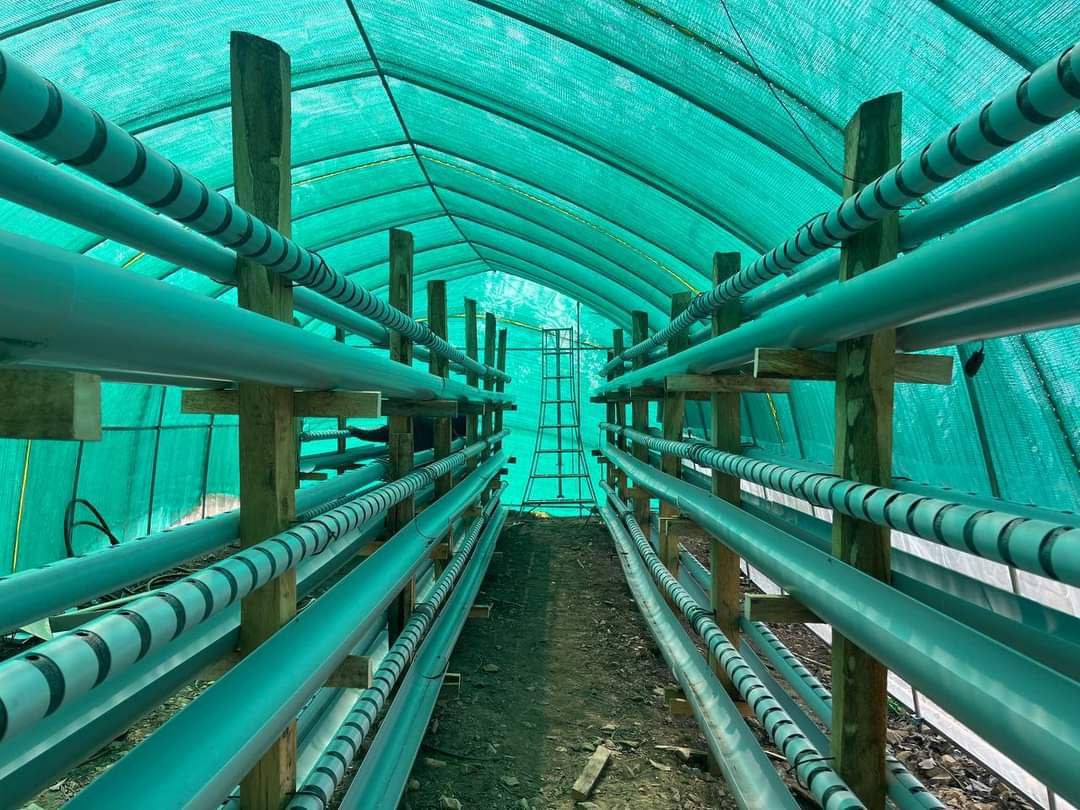A farmer adopts IoT based Hot callusing technology for improved walnut grafting

In comparison to other fruit crops, the propagation of walnuts through grafting in open conditions faces a notable challenge with a low success rate of about 20-30 %. In Bhutan, walnut is grafted from February to March during which maintaining the optimal temperature and humidity levels for the graft union is difficult. The most favorable temperature for successful graft unions is 27°C and a relative humidity of 80-90%. The introduction of hot callusing technology therefore addresses this issue by precisely maintaining the graft union temperature at 27°C, thereby expediting the callusing process between the stock and scion.
Following encouraging results from the initial research conducted at Wengkhar, a graft success rate of more than 80%, this technology is now being actively promoted in the farmer’s field at Bumpazor, Drepong gewog, Mongar with the fund support of CARLEP-IFAD on cost sharing mechanism. The primary objective is to strengthen the private nursery operators through the dissemination of such IoT based technology. The established structure, measuring 10X5 meters, accommodates 1200 grafted walnut seedlings, showcasing effective space utilization through vertical farming. The application of hot callusing technology, coupled with drip irrigation, is meticulously managed and monitored through IoT-based automation. The establishment cost of the technology is more than Nu. 0.200 million. Through the adoption of this technology, a farmer can anticipate generating nearly Nu 0.200 million from the sale of grafted walnut seedlings.

